Hello from Q3 2024. Mexico & Ethiopia coffees are landing as we head into Peru, Rwanda, & Bolivia seasons. On the logistics side, the ongoing challenges that we’ve reported for the last 2 quarters show no sign of easing. The C market is up although it hasn’t created the same ripple-out dynamics we saw in the early 2020s. Read on for details on what the quarter has in store, from logistics to C market flux to every origin in which we work. Click here to listen.
Logistics, Port, & Warehouse Updates
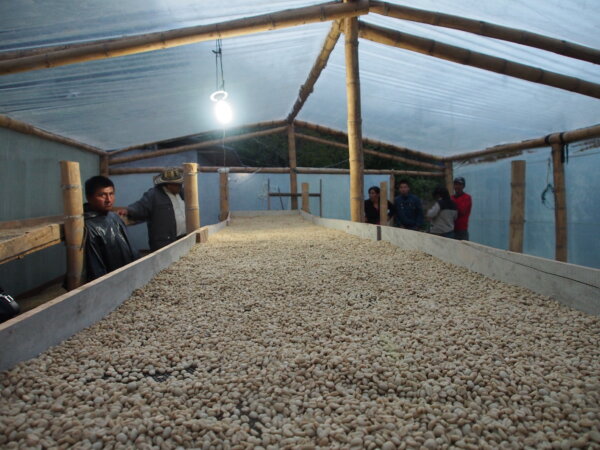
Global shipping disruptions are far from over as we enter the second half of 2024. The situation in the Red Sea remains chaotic, with Houthi rebel assaults on commercial vessels escalating in recent weeks. All carriers continue to re-route vessels around the Cape of Good Hope, which continues to impact transit times, scheduling reliability, & equipment availability. Shipping rates have increased dramatically, though not yet to peak COVID levels. The persistent delays, long lead times for bookings, & overall higher costs represent a new, challenging reality in the shipping landscape with no clear end in sight.
Carriers including MSC are currently considering withdrawing their vessels from routes serving the Horn of Africa, including the port of Djibouti, because of ongoing risk of missile attacks. This move would have huge impacts for coffee shipments out of Ethiopia where equipment is already extremely scarce & congestion in neighboring ports is skyrocketing.
Ports throughout Asia are experiencing serious container shortages, leading to delays in loading & increased port congestion. Carriers have recently begun omitting the port of Singapore, a main transshipment hub, because of extremely low equipment availability. There is very little slack in the system, & this has cascading effects on other ports & shipping routes.
In better news, the daily transit restrictions on the Panama Canal have mostly been lifted, as drought conditions have eased.
On the US-side, port congestion is relatively low at the moment. Rail has been a bottleneck, though congestion is improving on the West Coast. The Port of Baltimore shipping channel has fully reopened, 11 weeks after a container ship struck the Francis Scott Key Bridge. The International Longshoremen’s Association, representing East & Gulf Coast dockworkers, halted negotiations with the United States Maritime Alliance early in June, raising the specter of a strike if both sides cannot agree on a new contract by September 30, 2024. West Coast port traffic may increase dramatically if shippers decide to avoid strike risk by routing away from East Coast ports. Canada’s railway workers are also threatening to strike over safety concerns, which could push cargo volume to US ports.
Supply, Demand, & The C Market
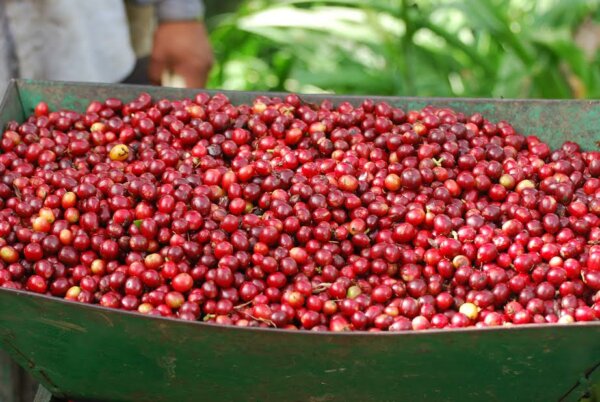
Just as we published our Q2 report, the market spiked back up to around $2.25, and it still hovers around that area at time of writing. Normally, global supply would offer some downward relief, but the combination of logistics disruptions and domestic sentiment from the trade has continued to prop up the C.
While the roasting side has started to forecast longer and larger positions, the trade side is still very conservative with much of the industry reporting losses last year they don’t want to repeat this year. In other words, uncommitted spot positions are smaller with more limited offerings for the time being. Logistics have presented major issues as attacks in the Gulf of Aden and Port of Djibouti have ripple-out effects, keeping prices high.
Peru
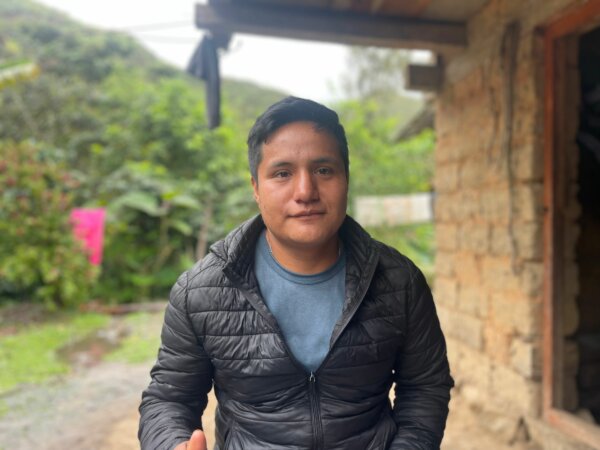
It’s officially go-time in Peru. Our sourcing team spent the month of June meeting with supply chain partners in Amazonas, Cajamarca, Cusco, & Puno to plan for the 2024 season. The coffee harvest started early in most of the country. We anticipate higher quality than we did in the 2023 season as the drought that affected cherry ripening in some regions in 2023 has come to an end.
While the C Market continues its ride well above $2/lb, we are not seeing the same high local prices & desperation to acquire coffee that we saw with similar C market prices in 2022. The difference is that the largest buyers—Starbucks, Nespresso, etc—have yet to contract coffee themselves. This keeps the multinationals & large independent exporters at bay. At the time of writing, the price per kg of parchment is around 13 soles per kilo (USD $3.43) with the C market at $2.30 per pound. During the same period in 2022, when the market was also hovering around $2.30 per pound, buyers across the country were paying around 16 soles (USD $4.23 with today’s exchange rate) per kilo of parchment while multinationals & smaller companies alike were scrambling to purchase coffee.
Perus will be going afloat earlier than ever this season, with the first containers scheduled to ship to New Jersey & California at the end of July.
Available Lots
We’re sold out of spot Peru for the season. We anticipate a strong range of offerings in the upcoming season from Regional to Community ID through Producer ID. We also expect even higher quality than we’ve seen in the past couple years. With local pricing somewhat stable out of the gate this season we will offer a formidable value proposition for your fall through winter needs.
Colombia
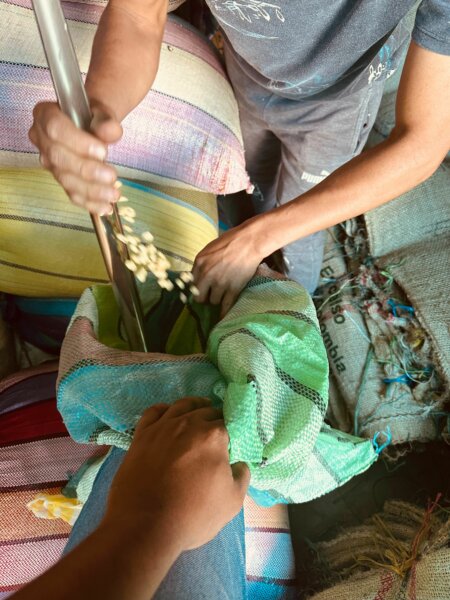
The Colombian coffee trade remains a tricky & competitive environment to navigate. The Southern Colombian crop appears smaller due to weather & a ripening cycle that took place within a very narrow & early window. The larger multinationals are ultra-aggressive in their approach with local prices soaring to levels similar to the 2022 C market spike.
We are concerned because quality has historically suffered in high market scenarios like this one. We expect a pronounced difference in our offering price levels between Colombia & Peru this season, as it now seems as though we will likely be paying upwards of 70c/lb FOB more in Colombia.
The good news: farmers continue to reap the rewards of a volatile marketplace regardless of where they deliver their parchment.
Available Lots
Last year’s offerings are now sold out.
We will have a limited supply of Colombian coffee this fall due to the volatile pricing & increased quality risk. We highly recommend talking to your Red Fox rep about excellent Perus as a replacement for the fall & winter months ahead.
We hope to see a more stable marketplace in Colombia by the time the 2nd semester begins mid-to-late fall 2024 in order to provide a more robust offering this coming winter.
Rwanda
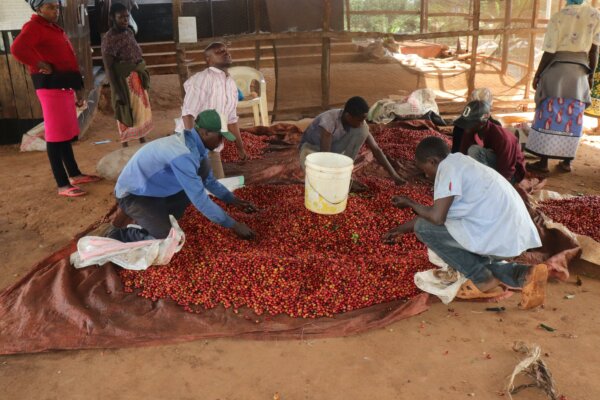
Harvest season is wrapping up in Rwanda with volumes up over last year. Irregular rainfall early in the year pushed back harvest, but slower cherry maturation often leads to higher quality—which is what we’re seeing on the offer table so far.
This harvest is the first since Rwanda’s zoning policy, in place since 2016, was abolished by the Ministry for Agriculture & Animal Resources. The zoning rules required that washing stations only buy cherries from farmers within their designated zones. Since the zoning policy has been revoked, washing stations & buyers can buy cherries from farmers in any zone in the country.
The immediate impact has been increased cherry competition across the country, as buyers can freely move across zones while farmers aim to sell their coffee to the highest bidder. The minimum price for coffee cherry set by NAEB (the National Agricultural Export Development Board) was already high this year at 480 Rwf/kilo, but fierce competition for cherry has driven that significantly higher—Kanzu cherry prices surpassed 900 Rwf/kilo at peak harvest. While high prices have immediate benefits for coffee producers, they bring higher risk & uncertainty to the supply chain. This harvest season represents a transitionary period. The longer term impacts for the coffee sector in Rwanda remain to be seen.
Kanzu washing station, with its high elevation & cooler climate, is still receiving cherry for a few more weeks, but the bulk of this year’s volume has been processed, dried, & warehoused in Rusizi ready to be milled & shipped. Red Fox was in Rwanda in June to cup through outturns & start making selections for this season. The Kanzu profile we love is on full display—bright tangerine & nectarine acidity, juicy green grape & red plum, sweet caramelized sugars & a honeyed body. We aim to have the first container of Kanzu lots afloat soon for fall arrival to warehouses in the US.
Available Lots
Rwanda spot is all sold out. Stay tuned for info on forward booking this year’s harvest later this summer.
Bolivia
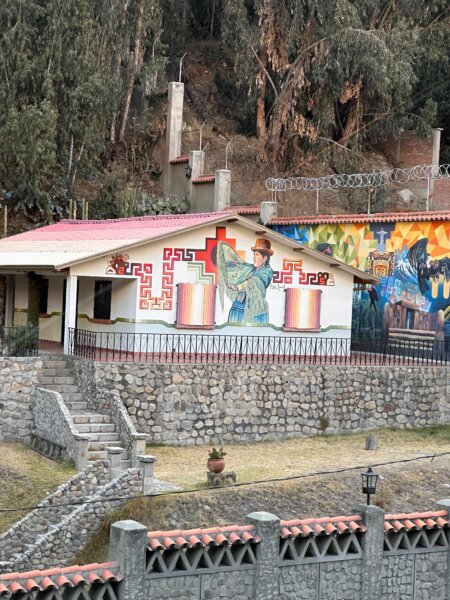
Bolivia is the most promising new origin project we’ve had in some time at Red Fox. Last year’s offerings arrived in prime condition, generating the confidence we needed to grow volumes with our supply chain partners. Harvest is early, with the greater Caranavi zone about to enter peak season, as is the case in most South American regions this season.
Producer partners expect a significant increase in production nationwide, albeit to a still relatively tiny grand total of 35,000 bags in 2024. For context, Peru, with an increased crop estimate as well, should exceed 4,000,000 bags in 2024. Bolivian coffee is rare & unique.
We’ll begin shipping coffee late July/early August & will land containers from early fall through winter.
Available Lots
We have a small volume of washed regional coffee from Caranavi left over from the end of last season’s harvest.
Expect fresh washed & anaerobic naturals come fall.
Guatemala
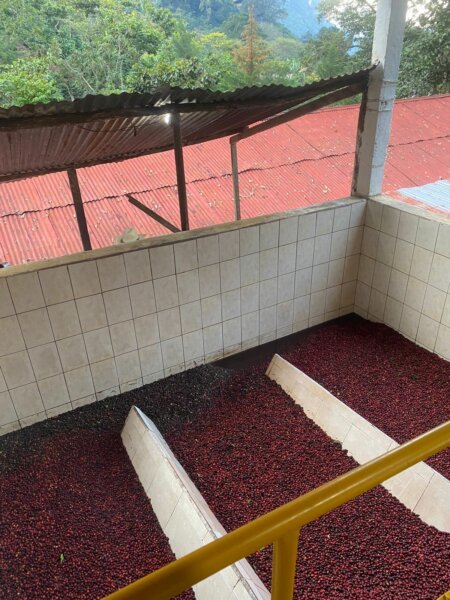
The harvest is wrapping up in Guatemala. Our containers are afloat full of Huehuetenango producer lots headed to both coasts. The West Coast container is estimated to arrive at the Annex mid-July while the East Coast container will strip in closer to the end of July.
These lots are going fast. Profiles range from clean, malic-driven acidity to bigger red-fruit-forward flavors. Contact your sales rep for samples.
Available Lots
Coffees are on the way but selling fast. If you want to ensure you get your share, contact a rep now.
Mexico

Our first few containers have already landed stateside with some available lots that are moving quickly due to excellent arrival quality & range of prices for various applications. Most of our coffee is currently in transit, with arrivals running through July & early August.
That said, we have seen highly competitive milling & shipping efforts the past few months. The main port of Veracruz has become very congested causing some delayed shipments & rolled bookings.
Weather-wise, Mexico has been in a historic drought. Rains have finally begun to fall across the country, which will help ease those conditions and trigger flowering in the coffee lands.
In political news, Mexico has a new President elect (its first woman) as of the early June elections. Protests in Oaxaca leading up to the election grew stronger as the controlling party had not made good on their promises. The airport was shut down for a couple days, but has since reopened.
Available Lots
In NJ, we have a few lots from the first arrivals of Veracruz & Oaxaca community lots still available, with more stocking in the coming weeks. These will include our brand-new Puebla community & producer offerings—top-quality Mexico coffee with very sweet, balanced, clean, complex, & highly chuggable profiles.
In CA, we have several fresh, premium Oaxaca community lots now available. Layered, sweet, and complex with red fruit & subtle florals, these unique coffees are versatile crowd-pleasers.
Limited, organic-certified Chiapas community & producer ID microlots are still available, afloat to both coasts. These are some of best, most consistent coffees we’ve seen in years—maybe ever—from this state. Get in touch to secure your needs early.
Ethiopia
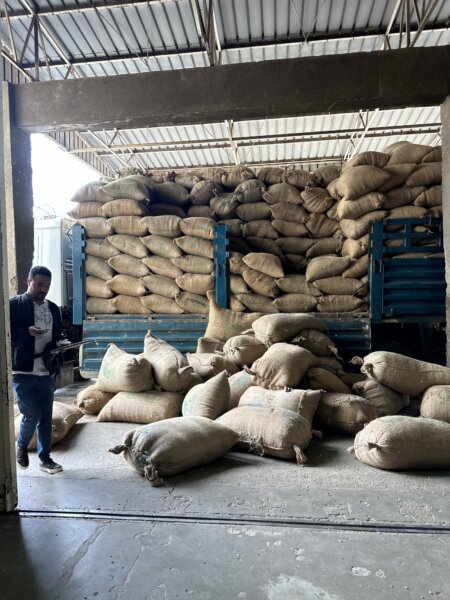
Ethiopia continues to face struggles along several axes. We were fortunate enough to have moved quickly from the outset of the season & gotten coffees out of Djibouti in February/March. All but one of our coffees are currently either in US warehouses or afloat. We look forward to another strong season in ‘24/’25.
That said, MSC has officially canceled all vessels from calling into the Port of Djibouti as of late June. It’s estimated the Houthi airstrikes have successfully attacked over 60 vessels in the Gulf of Aden since October 2023. A new, longer-range ballistic missile hit an MSC vessel on Tuesday 6/25 causing MSC to halt service into the region.
Heavy rains in Addis & across the country create further concern for any remaining coffee awaiting shipment.
Available Lots
Demand for spot & afloat coffees has been markedly higher over the course of Q2 than it has for several years prior. Our positions evaporate almost instantly as we strip coffee into the warehouses. If you have a need for Ethiopian coffee this season we urge you to reach out to your Red Fox rep soon.
Kenya

Because we were able to get in and get coffee out early in a tumultuous year, our Kenyas are all landed and almost entirely sold as we begin to await the next season.
Due to government regulatory changes, auctions in Nairobi have been dragging on longer than usual, with the last bit of main crop still on offer. Our partners in Kenya are hopeful that with most of the bugs ironed out, next year will run more smoothly, though President Ruto continues to be divisive amongst the public with new proposed tax hikes while cost of living continues to spike in Kenya. The last scheduled auction is on July 2nd, before a month-long closure.
The high market has meant good prices for growers as we head into the fly crop season, where harvest has already begun. Quality is reported to be high, though not as high as this past main crop. The auction market is set to resume on August 6.
Available Lots
Top lots are all but sold out. Reach out to your rep for any remaining limited availability.
|
|
| Interested in sourcing coffee with us? Reach out at info@redfoxcoffeemerchants.com. To learn more about our work, check out our journal and follow us on Instagram @redfoxcoffeemerchants . |
